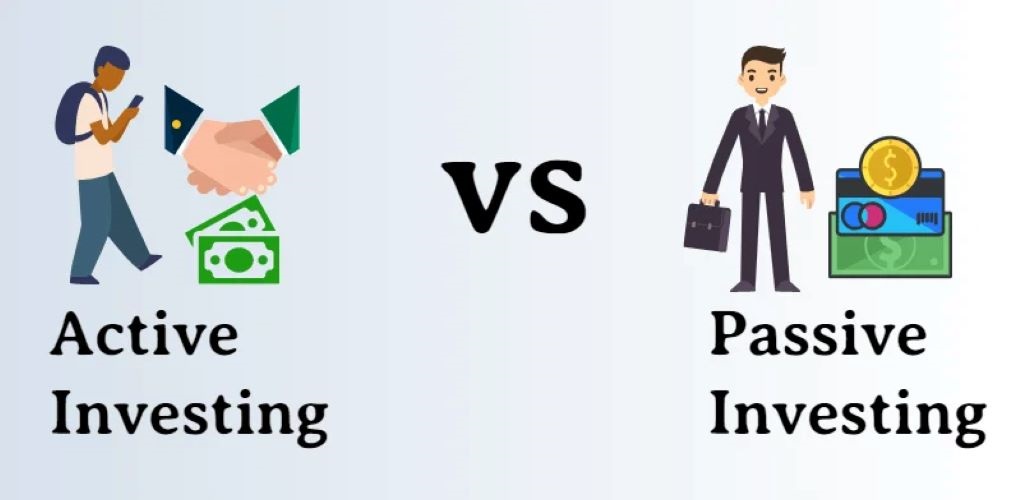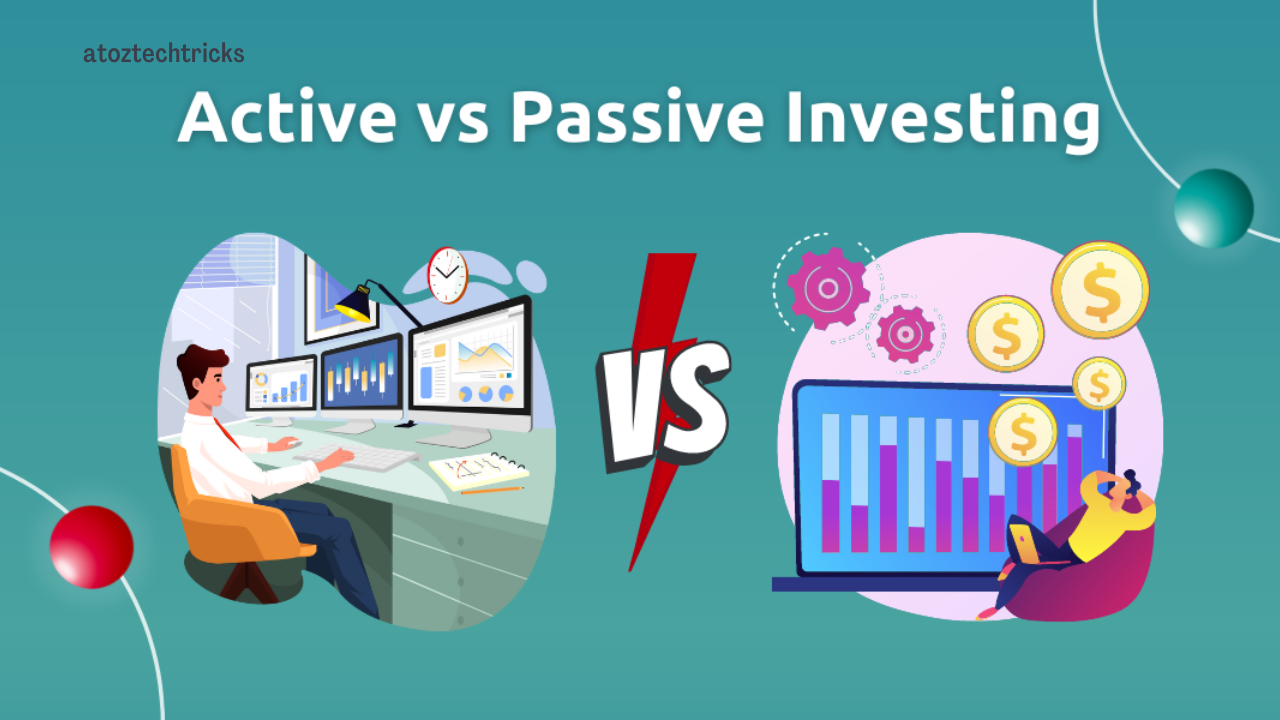Choosing Between Active and Passive Investing: A Comprehensive Guide
When it comes to investing, one of the fundamental decisions you’ll face is whether to choose active or passive investing strategies. Each approach has its proponents and critics, and understanding the differences between them can help you align your investment strategy with your financial goals, risk tolerance, and investment philosophy.
Understanding Active Investing
Active Investing Defined
Active investing is an investment strategy where managers or individual investors make decisions about buying and selling securities in an attempt to outperform a benchmark index. Active investors rely on analysis, research, and market forecasts to pick stocks, bonds, or other assets with the expectation of achieving higher returns than the market average.
Diversifying Your Investment Portfolio: A Comprehensive Guide
Key Features of Active Investing
- Frequent Trading: Active investing involves frequent buying and selling of assets. The goal is to capitalize on short-term market movements and opportunities.
- Research-Driven: Active investors conduct in-depth research and analysis of companies, industries, and economic conditions. This includes studying financial statements, market trends, and macroeconomic factors.
- Flexibility: Active managers have the flexibility to adjust their portfolios based on changing market conditions or new information. They can shift investments between sectors, industries, or asset classes to take advantage of perceived opportunities.
- Higher Costs: Active investing often incurs higher transaction costs due to frequent trading and management fees. Active mutual funds, for example, tend to have higher expense ratios compared to passive funds.
- Potential for Higher Returns: The primary aim of active investing is to achieve returns that exceed those of a benchmark index. Successful active investors can potentially earn significant excess returns if their strategies and decisions outperform the market.

Pros of Active Investing
- Opportunity for Outperformance: Skilled active managers or investors can potentially achieve higher returns than a passive strategy, particularly in inefficient or volatile markets.
- Flexibility and Adaptability: Active investors can adjust their strategies based on market conditions and economic changes, potentially avoiding losses or capitalizing on emerging trends.
- Specialized Expertise: Active managers often have specialized knowledge and resources that can provide a competitive edge in identifying investment opportunities.
Cons of Active Investing
- Higher Costs: Frequent trading and management fees can erode returns over time. The costs associated with active investing can be a significant drawback, especially if the fund does not outperform its benchmark.
- Risk of Underperformance: Not all active managers or investors achieve higher returns than their benchmarks. Some may underperform due to poor stock picks or market timing errors.
- Emotional Bias: Active investing can be influenced by emotional decision-making or short-term market noise, which may lead to suboptimal investment choices.

Understanding Passive Investing
Passive Investing Defined
Passive investing is an investment strategy that aims to replicate the performance of a specific market index or benchmark. Instead of trying to outperform the market, passive investors seek to match the market’s returns by investing in a diversified portfolio that mirrors the index.
Key Features of Passive Investing
- Index Tracking: Passive investors typically invest in index funds or exchange-traded funds (ETFs) that track a specific market index, such as the S&P 500 or the NASDAQ-100.
- Lower Costs: Passive investing generally involves lower management fees and transaction costs compared to active investing. Index funds and ETFs have lower expense ratios because they require less active management.
- Buy and Hold Strategy: Passive investing follows a buy-and-hold approach, where investments are maintained over the long term with minimal trading. The strategy is based on the belief that the market will provide satisfactory returns over time.
- Diversification: Index funds and ETFs offer broad diversification by holding a wide range of securities within the index. This diversification helps reduce individual security risk.
- Consistent Performance: Passive investors aim to match, not beat, the performance of the market. While they may not achieve extraordinary returns, they are less likely to suffer significant losses due to the broad market exposure.
Pros of Passive Investing
- Lower Costs: The reduced management fees and transaction costs associated with passive investing can lead to higher net returns over time.
- Predictable Performance: By tracking an index, passive investors can expect returns that closely match the overall market performance, reducing the risk of underperformance.
- Simplicity and Convenience: Passive investing requires less time and effort compared to active investing. Investors do not need to conduct extensive research or make frequent trading decisions.
- Diversification: Passive funds typically offer broad market exposure, which helps spread risk and reduce the impact of poor performance by individual securities.
Cons of Passive Investing
- Limited Flexibility: Passive investors cannot adjust their portfolios based on market conditions or individual stock performance. They are bound to the performance of the index they are tracking.
- Potential for Market Declines: Since passive investors are invested in the entire index, they are exposed to market declines and downturns. The strategy does not offer protection against market downturns.
- No Opportunity for Outperformance: Passive investing does not aim to exceed market returns. Investors may miss out on opportunities for higher returns that skilled active managers might identify.
Choosing Between Active and Passive Investing
1. Assessing Your Investment Goals
Your investment goals play a crucial role in determining whether active or passive investing is right for you. If your goal is to achieve higher returns and you are willing to take on higher risks and costs, active investing might be suitable. Conversely, if you aim for steady, long-term growth with lower costs, passive investing may align better with your objectives.
2. Evaluating Your Risk Tolerance
Risk tolerance is another key factor in choosing between active and passive investing. Active investing involves higher risks and potential volatility due to frequent trading and market timing. If you are comfortable with this risk and have confidence in your ability to make informed decisions, active investing may be appropriate. On the other hand, passive investing offers a more stable approach with lower risks, making it suitable for investors with a lower risk tolerance.
3. Considering Investment Time Horizon
Your investment time horizon also influences the choice between active and passive investing. Active investing may be more suitable for those with a shorter-term horizon who can take advantage of market opportunities and adjust their strategies as needed. Passive investing, with its long-term buy-and-hold approach, is often ideal for investors with a longer time horizon who seek consistent growth and lower costs.
4. Evaluating Costs and Fees
The costs associated with active and passive investing are a critical consideration. Active investing generally involves higher management fees and transaction costs, which can impact overall returns. If cost efficiency is important to you, passive investing offers lower fees and expenses, which can result in better net returns over time.
5. Understanding Your Expertise and Involvement
Your level of expertise and willingness to stay involved in your investments can also guide your decision. Active investing requires a higher level of expertise and time commitment to research and decision-making. If you prefer a more hands-off approach and lack the time or expertise for active management, passive investing provides a more convenient and straightforward option.

Blending Active and Passive Strategies
Many investors choose to blend both active and passive investing strategies to achieve a balanced approach. This hybrid strategy allows investors to benefit from the strengths of each approach while mitigating their respective weaknesses. For example, you might use passive index funds for core holdings to ensure broad market exposure and lower costs, while allocating a portion of your portfolio to actively managed funds or individual securities to seek potential outperformance.
Choosing between active and passive investing is a personal decision that depends on your investment goals, risk tolerance, time horizon, and cost considerations. Active investing offers the potential for higher returns and greater flexibility but comes with higher costs and risks. Passive investing provides a cost-effective, diversified approach with consistent market performance but lacks the potential for significant outperformance.
By understanding the key features, pros, and cons of both strategies, you can make an informed decision that aligns with your financial objectives and investment philosophy. Whether you choose active, passive, or a combination of both, the most important factor is to have a clear investment plan and stay committed to your long-term goals.
Investment Strategies: A Comprehensive Guide to Growing Your Wealth




Post Comment